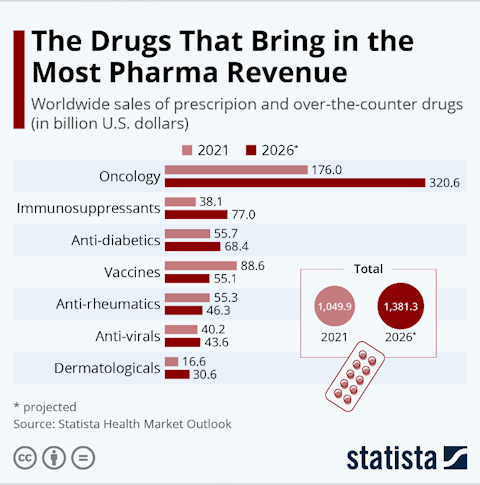
Occasionally I like to return to basics. Sure, there’s lots of “news” we could examine. There’s always lots of “news”: it’s part of the entertainment industry now. But occasionally it’s good to step out of the mud and onto more firmer ground.
The ANP website has a section called “What We Stand For“, wherein thirteen different topics or demands are highlighted and elaborated on. A number of years ago, I made a simple hand-out for each of them, and one that summarized all thirteen. For simplicity’s sake, you can download the double-sided pdf here, or by clicking on the image below.
What caught my eye the other morning while I was “going over the basics” was the section on Culture and Science. In my abbreviated version, it reads: “Culture and Science- [We demand] State promotion of Aryan culture and values, and scientific research for the benefit of society, not large corporations.”
It was this latter bit, about “scientific research for the benefit of society, not large corporations” that captured my attention. The first question that popped into my head was, “I wonder what the state of scientific research actually is in this country.” What follows are my opinions on the matter. The short answer is: it’s broke.

Of course, this has the potential to be a big topic. Are we talking about science as it is conducted? Mechanical Science? Biology? Chemistry? Astronomy? Medical? etc. The answer is “yes”- all of the above. Metapedia defines science as “any system of knowledge that is concerned with the physical world and its phenomena and that entails unbiased observations and systematic experimentation. In general, a science involves a pursuit of knowledge covering general truths or the operations of fundamental laws.” We’ll go with that for now.
Science, as a general pursuit or concept, is central to National Socialism: unlike other political or social ideologies founded on “pie in the sky” opinions and beliefs, National Socialism is ultimately rooted in Natural Law. What do we mean by this? Simply stated, National Socialism recognizes that we, as homo-sapiens, are subject to the same forces of nature and evolution as the rest of the living world. In short, genetics matter. Even if we can manipulate and alter how those laws are applied, through gene-splicing technology for example, it still requires an acknowledgment and understanding of nature and its laws.
This requires an unflinching and honest appreciation of the fundamentals of scientific inquiry. Unlike the Liberal Lemmings of today, we really do “trust the science.” When true science demonstrates that there really are differences in the biological makeup and the cognitive abilities of the races, we believe it. When science shows that there are real differences between men and women, and how they perceive and interact with the world, we trust it. But before we get lost in the weeds of how the work of science is regarded, we should circle back to the our starting statement: “scientific research for the benefit of society, not large corporations.” It is this point that speaks to the problem or nature of scientific inquiry today.
First, it is important to ask “what is the purpose of science?” In theory, the answer is similar to the one found when the question is asked of philosophy: knowledge for the sake of knowledge – humans are inherently curious animals – and to help us better live our lives. The former is fairly straight-forward, but the latter can take at least two forms: theoretical and practical. Understanding our world, that is to say, understanding the forces that shape our world and our interactions with it, provide both a larger context for our lives and how it relates to the whole of life on this planet, as well as helping us to better navigate the physical vagaries of our existence: for example, why malaria is often found around swamps (science tells us it is a parasite carried by mosquitoes and not, as was once believed, by bad air. The same is true of typhus: once thought to by caused by “odors”, it is now understood to be a bacterial infection spread by lice, fleas, and chiggers. Etc.)
Drawing from the theoretical, scientific inquiry often has a practical aspect or component as well. Think of the compounds used to treat diseases once the cause has been identified, or the nature of flight and aerodynamics being translated into the airplane. Theoretical science and the practical application of it go hand in hand.

Unfortunately, in our capitalist society, this is where things start to go off the rails.
Scientific inquiry requires resources, which in turn requires funding. In essence, there are two sources of funding: private capital and public funds provided by the government (with our money. Remember, the government has no money of its own). For the National Socialist, generally, we take little issue with private capital funding its own ends so long as those ends do not harm the Volk. If you want to do the legwork to discover the means to a better widget that will be marketable and of benefit to society as whole, more power to you.
We do, however, take issue with the sweat of the worker’s brow being used to fund science -whether it be pure research or its technological application- for the sole benefit of large private corporations who, using essentially price-gouging, make obscene profits. Unfortunately, that is essentially the state of scientific inquiry in the United States today.
By way of an example, the poster-child for this malfeasance is cancer research.
The U.S. government spends over $7.2 billion annually on cancer research through the National Cancer Institute (NCI), which includes funding for various cancer drug research initiatives.
Basic research, which is predominantly publicly funded, often provides the foundational knowledge about disease mechanisms and potential targets for therapy. Studies have shown that nearly all drugs approved by the U.S. Food and Drug Administration (FDA) were built on decades of early fundamental science largely financed by government research grants.

Indeed, from 2010 to 2019, tax-payer money funneled through the National Health Institute used to research drugs that were approved and that went to market (to the great financial benefit of the companies involved) totaled over $187 billion. A paper on the government’s own website points out that Americans spent $99 billion on orally- and clinician-administered anticancer therapies (excluding supportive care) in 2023 alone. It also found that pharmaceutical manufacturers typically increase prices of marketed drugs, even when unsupported by new evidence of clinical benefit or changes in use.

For example, the price of lenalidomide, an orally-administered therapy indicated to treat multiple myeloma (from which my own mother died) and myelodysplastic syndromes, increased from $215 per pill in 2005 to $763 per pill in 2020 (a 250% increase, or an average of nearly 17% per year, while the rate of inflation nationally averaged 3%.) As of 2023 it cost $892 per pill. The largest manufacturer for this drug is Bristol Meyers Squib, who has averaged gross profits of $34 billion per year over the last five years. Shareholders are very happy. Those who have lost loved-ones because they could not afford adequate care? Not so much.
High prices have also decreased Americans’ access to, and affordability of, necessary anticancer therapies and thus, increased their risk of cost-related nonadherence, cancer recurrence, and mortality. Why are prices in the U.S. so high? The reason is simple – pharmaceutical manufacturers are permitted to set the prices of anticancer therapies as high as the market will bear. Due to disparate pricing approaches, prescription drug prices in the U.S. are, on average, two to three times higher than other high-income countries. In turn, per capita spending on prescription drugs is more than double in the U.S. compared to industrialized countries across Europe and Asia.
“The discrepancy between spending and outcomes in cancer care suggests that the U.S. treatment model is deeply flawed. Despite pouring billions into advanced therapies and technologies, the survival rates for many cancers remain subpar compared to countries that spend far less. ” – Dr. Leigh Erin Connealy

Like I said, cancer research is the poster-child for public science money being used for corporate profits, which is all the more egregious because the products produced by these companies could actually benefit our society and save lives.
The scamdemic is another obvious example: government research that supported the development of mRNA COVID-19 vaccines cost tax-payers hundreds of millions of dollars (skyrocketing into the billions in 2020). By 2021, global sale of the COVID-19 vaccines made more than $100 billion for Moderna and Pfizer at a time when the cost to produce the vaccine was $1-$3 per dose, and the big pharma companies were charging $110 per dose. If you didn’t pay that much, it’s because the government subsidized the jab. So, you paid twice: first for the research, then for the product developed from it.
But Big Pharma is not the only example of course.
The aerospace industry also benefits from government sponsored R&D. The sponsorship can take different forms: in addition to the findings of tax-payer funded scientific research, they receive direct government subsidies, loans, tax-benefits, and favored contracts.
SpaceX and wonder-child Elon Musk’s other efforts are the defacto standard here: SpaceX has received at least $1 billion in government contracts, loans, subsidies and tax credits each year since 2016, and between $2 billion and $4 billion a year from 2021 to 2024. Since it’s founding, Musk and Company have received over $38 billion in tax-payer dollars. And yet, they still charge our military between $100 million to $315 million per launch to put satellites in orbit, as well as a surcharge for use of its Starlink system. Needless to say, Musk hasn’t been handing out free Teslas either. In related news, Musk has again been confirmed as the richest man in the world.

Another classic example is DARPA, the Defense Advanced Research Project Agency. Frankly, I’m not going to deep dive this one. Spending more than a minute or two on DARPA’s website makes me nervous. When it comes to black-budget items and projects, there is the rest of the world, and then there’s DARPA. Their annual budget is a paltry $4.2 billion. Sure. We all believe that.
More to the point, DARPA really has used tax-payer money to come up with some truly world changing technology through scientific inquiry. For example, DARPA is credited with inventing:
- The internet. No joke. Those interested in learning more can skip Al Gore, and look up “ARPANET.”
- GPS
- Google Maps: the tech behind this was developed at DARPA
- μBRAIN and other neuralink technologies, which has been used by Musk
- Siri: Yes, that Siri. Apple’s digital virtual assistant started life as a DARPA project in the early 2000s, known as CALO and PAL.
- Stealth aircraft: Stealth development started in the early 1970s when DARPA developed “Project Harvey”. Of course, Stealth tech is now used by private defense contractors.
There are other examples of course (and likely many, many more we don’t know about). But notice anything? Yes, all of those tax-payer funded research projects have been turned into extreme money-makers by private companies such as Google, Apple, Musk, and Northrop Grumman. As a refresher, remember our statement: “scientific research for the benefit of society, not large corporations.” Yes, we all benefit from the technology noted above. But the large corporations benefit more.

Lastly, and sadly, in many ways science has devolved into little more than a form of corporate welfare, often funneled through universities. It’s always fun, in a painful “play with the loose tooth” sort of way, to look at examples of how the American Worker’s money is being spent. Some examples include:
- Gambling for Pigeons: The National Institute of Health (NIH) granted $465,339 to researchers at Reed College in Portland, Oregon to “create a token-based economy where pigeons are taught to gamble with slot machines.” The study gave pigeons tokens that they can “earn, accumulate, spend, or gamble” on slot machines. From the grant proposal:“…the focus of this research is on laboratory models rather than practical applications.”
- Bees and rats on Cocaine: The National Institute of Health spent over $240,000 to study the impact of cocaine on honey bees at the University of Illinois at Urbana-Champaign. With cocaine in their system, the bees were more likely to dance, the researcher found. Researchers must like using cocaine (I’m sure all of it is accounted for…), as they also spent $419,470 to determine if lonely rats seek cocaine more often than happy rats. I’m not kidding. Clearly these people need to get out more.
- AI Toilets: Sorry for this, but I go where the science takes me. The National Cancer Institute (part of the Department of Health and Human Services) funded nearly $7 million to researchers at Stanford University to build an AI toilet. The toilet is equipped with cameras that scans the user’s waste and unique “analprint.”
- $500k Study if Selfies Make you Happy: A University of California, Irvine-based research team received a half-million dollars in federal funding to study if taking selfies makes people happy. The 4-week study found that taking selfies boosted participants’ moods.
- Chimps Throwing Feces: The US National Institutes of Health spent $592,527 at Emory University in Atlanta to explore why chimpanzees throw feces. Another $117,000 was necessary to conclude that most chimps are right-handed.(!) Their research suggests that throwing feces is a sign of intelligence in chimps. In my opinion, this was clearly, if covertly, an attempt to legitimize or better explain the behavior of our current political parties.

I could go on. We haven’t touched on the corporate ownership of that bastion of unbaised science, the CDC. Or the pseudo-science used to support Obamy and Biden’s Green New Boondoggle. In fact, I actually took eight pages of notes to draw from for this post, but I suspect a this point, you get the idea.
The science is getting done, mostly (feces throwing chimps aside). But who is the true beneficiary? More and more, scientific research is becoming little more than corporate welfare and a means to maximize private profits by shifting some of the burden of doing the necessary research to the American taxpayer. We pay for it, they benefit.
While scientific inquiry purely in the pursuit of knowledge may no longer be feasible, we should demand that we not be expected to pay for it twice: once in funding the research, and again when we need the products and benefits, such as cancer medication, from those products developed from that research. At the very least, the American taxpayer should be afforded a discount, not a price markup: we helped create it.

In keeping with our National Socialist demands, I propose the following- and this is just me off the top of my head- remember, I have a degree in English, not Science: First, create a National Laboratory and Technology Department that not only explores scientific questions, but has the ability to implement the potential benefits derived from the answers to those questions. Publicly funded, not for profit, and committed to the public good. It will compete with private companies, thereby driving down costs generally, and make the tangible benefits of scientific discovery available to the common man. In short, socialize it. It’s called National Socialism for a reason.
Second, if private companies must use, or are allowed to use, publicly funded scientific developments (à la DARPA for example), then the products derived from that science and brought to market can be marked up no more than the average rate of investment returns found in the market, usually 7%-10%. Not the 250% we see with some cancer treatments, for example, or the creation of the world’s richest individual from riding the coattails of public investment.
As writer John Kaye says, “Money should be a means to an end, not the end itself. Instead of using financial power to control and exploit innovation, we should focus on using it to enable progress for the greater good. Science is most powerful when it serves humanity, not just the bottom line. If we can return to a model of collaboration, where investors and scientists work together for the long-term benefit of society, we will unlock the full potential of scientific discovery and create a better world for all.”
Amerika Erwache!
SUBSCRIBE TO THIS BLOG
(It’s free, and mostly painless)




Leave a Reply